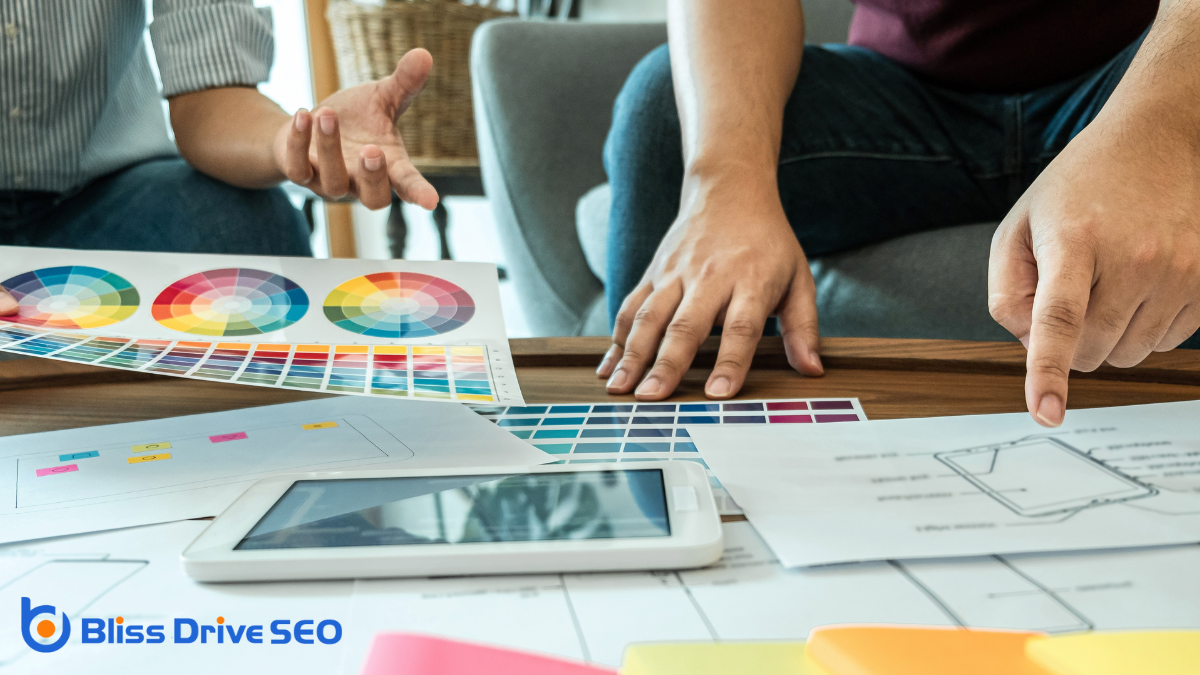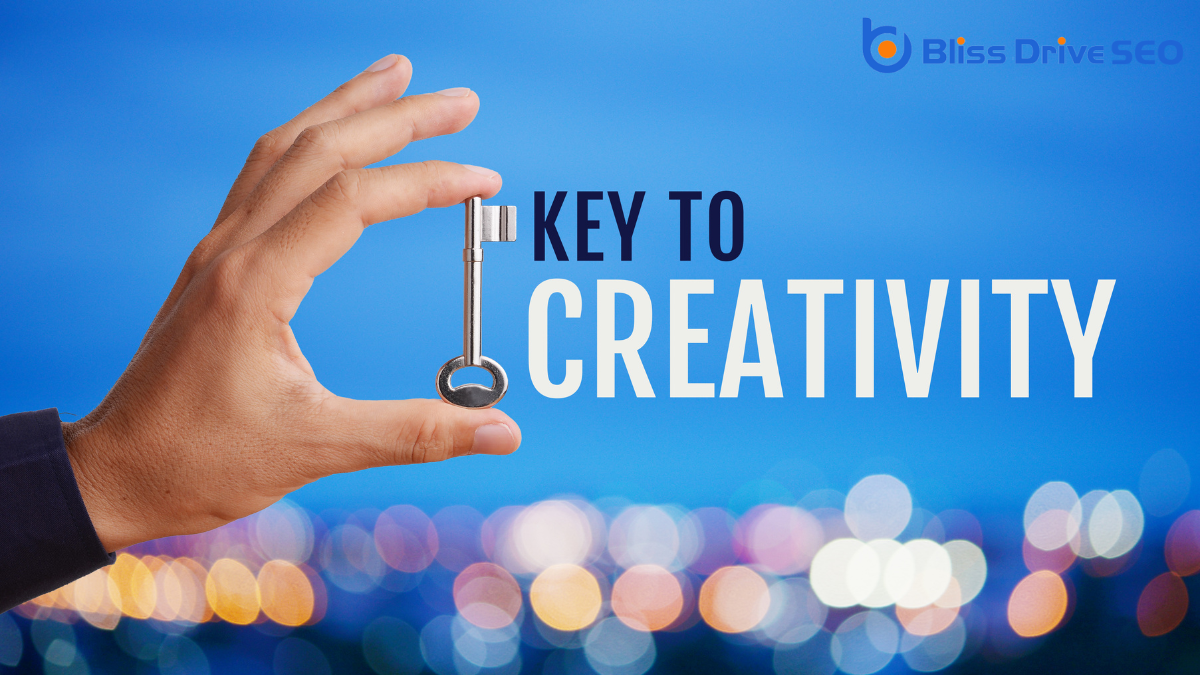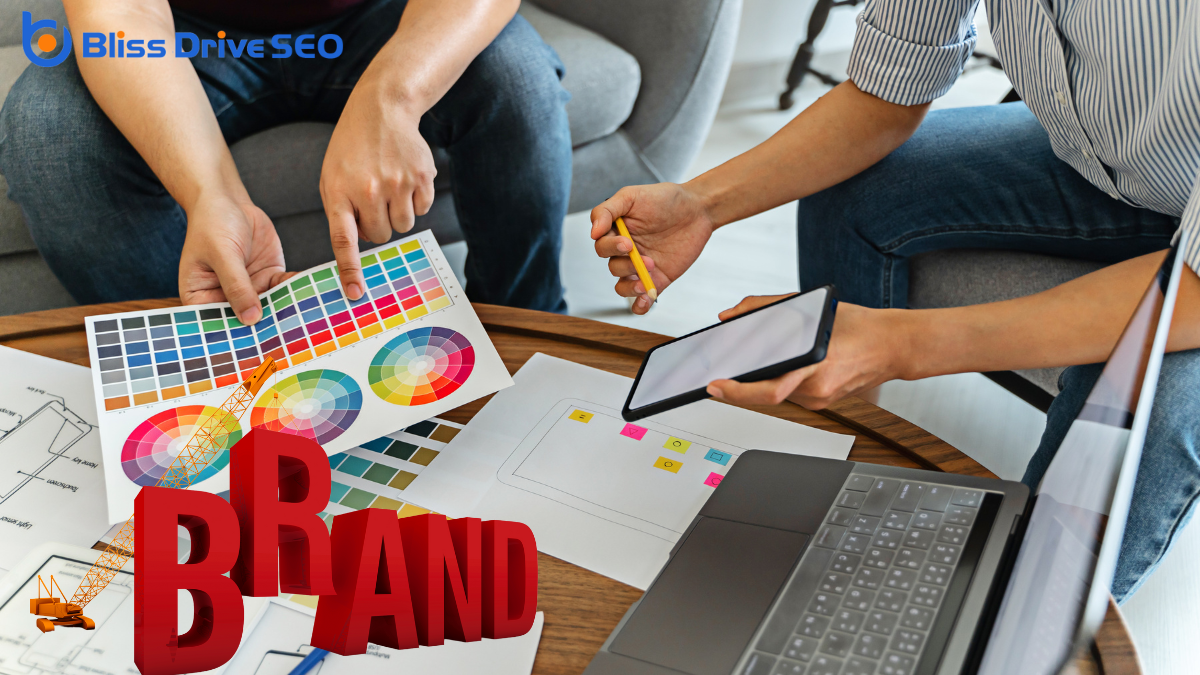Digital Marketing Services
Learn More About Us

You might wonder what sets creative web design apart in a sea of digital interfaces. It's not just about vibrant colors or flashy graphics; it's the thoughtful blend of aesthetics and functionality that captures attention and holds it. By prioritizing user experience and leveraging unique visual storytelling, creative web design transforms websites into engaging narratives. But how exactly does this design approach foster brand loyaltyThe tendency of consumers to continue buying the same brand's products or services. and influence user decisions? Understanding the nuances of this dynamic field might just be the key to revealing the potential of your online presence.
What exactly makes web design creative? It's about transforming a digital space into something engaging and meaningful. When you think about creative web design, imagine it as a balance between aesthetic appeal and functionality. It's not just about making things look good; it's about crafting an experience that resonates with users.
Creativity in web design involves originality and innovation, where you take familiar elements and present them in unexpected ways. You might wonder how this creativity manifests. It starts with understanding your audience and then using that insight to guide design choices. It's about choosing colors, fonts, and layouts that not only catch the eye but also enhance usability.
Creativity also involves problem-solving—finding unique solutions to design challenges. Moreover, creative web design is dynamic. It adapts to new technologies and trends, ensuring that your website remains relevant and engaging. It's about storytelling through visuals and interactive elementsElements that require user interaction, such as buttons, forms, and sliders., drawing users in and keeping them engaged.

When you're designing a creative website, focus on developing innovative visual concepts that capture attention.
Make sure to create a unique user experience that keeps visitors engaged and makes them want to explore further.
Diving into innovative visual concepts in web design is like opening the door to endless possibilities that captivate and engage users. You're not just creating a website; you're crafting an experience that tells a story through visuals.
It's about using design elements in unexpected ways to grab attention and communicate your message effectively. Think of bold color schemes that evoke emotions or unique typography that becomes a part of your brand's identity. These choices aren't just aesthetic; they're strategic tools to guide users' eyes and keep them interested.
Visual concepts can include anything from asymmetrical layouts to unexpected animations. Asymmetry breaks away from traditional grid systems, offering a fresh perspective that can make your site stand out.
Meanwhile, animations can breathe life into static pages, but remember, they should enhance the user's journey without distracting from the main content.
Innovative design also embraces minimalism, where less is more. By stripping away unnecessary elements, you highlight what truly matters.
It's about creating a balance between creativity and functionality, ensuring that each visual choice adds value. When done right, these concepts create a memorable digital space that resonates with users.
Building on innovative visual concepts and creating a unique user experience requires more than just stunning visuals; it involves crafting an intuitive and engaging journey for every visitor. Start by understanding your audience's needs and expectations. You want them to feel understood and valued, which means integrating navigation that's not only seamless but also anticipates their next move.
It's about creating paths that feel natural and rewarding, encouraging users to explore further without frustration.
Consider the elements that make interactions delightful. Micro-interactions, for instance, can turn a simple action into a memorable moment. They add personality and responsiveness, making users feel like they're interacting with something alive. Loading animations can keep users engaged even during brief waits, transforming potential frustration into a pleasant experience.
Consistency is key, too. Maintaining a coherent design language across pages helps users feel oriented and secure. But don't shy away from surprises—small, thoughtful deviations can captivate and retain interest.
Finally, test and iterate. Gather feedback from real users to uncover pain points and opportunities. This continuous refinement guarantees your website not only meets but exceeds expectations, offering a truly unique experience.
After all, your ultimate goal is to make visitors feel like they've discovered something special.
When designing a website, you should focus on balance and harmony to create a visually pleasing experience.
Applying color theory effectively will guide your users' emotions and draw their attention to key elements.
Don't forget that typography and spacing play essential roles in enhancing readability and ensuring your design looks polished and professional.
Achieving balance and harmony in web design is essential for creating visually appealing and effective websites. When you manage to strike the right balance, your site becomes more user-friendly and engaging.
Balance in web design involves distributing visual elements like text, images, and buttons evenly across the page. This doesn't mean everything has to be symmetrical, but rather that there's a sense of equilibrium.
To create harmony, you should ascertain that all design elements are cohesive and complement each other. Here are three ways to achieve balance and harmony:
Color plays a pivotal role in web design, often making a significant impact on a user's perception and interaction with a site. When you choose colors thoughtfully, you guide emotions and actions, helping users connect with your brand.
Applying color theory effectively involves understanding the color wheel, complementary colors, and how they evoke emotions. You might notice that warm colors like red and orange can create excitement or urgency, while cool colors like blue and green promote calmness and trust. This knowledge helps you decide what mood to convey, aligning with your site's purpose.
For example, a financial service site might use blues to communicate reliability, while a food delivery site could use reds to stimulate appetite.
Contrast is another key principle. It guarantees readability and accessibility by making text stand out against its background. A high-contrast palette helps users with visual impairments navigate more easily.
Don't forget cultural contexts; colors can have different meanings worldwide. Being mindful of these differences guarantees your design is universally appealing.
Building on the emotional resonance created by color, typography, and spacing further defines a website's aesthetic appeal. Choosing the right fonts and arranging text thoughtfully can elevate the user experience and communicate your brand's personality.
Typography isn't just about picking a font; it's about guaranteeing readability and setting the right tone. A playful font might suit a children's brand, while a more elegant style fits a luxury product.
When considering typography and spacing, keep these principles in mind:
Embracing the dynamic nature of the web, interactive design features have become a cornerstone of modern web design, transforming static pages into engaging experiences.
You'll find that these elements draw users in and encourage active participation, which is essential in keeping visitors on your site longer and enhancing their overall experience. Interactivity can range from simple hover effects to more complex animations or interactive infographicsVisual representations of information, data, or knowledge intended to present complex information qu..., all designed to make your site more intuitive and enjoyable.
To effectively implement interactive features, start by focusing on usability. Consider how elements like buttons, forms, and menus respond to user actions. You want users to feel guided and empowered, not confused or frustrated.
Incorporating features like sliders, pop-ups, or dynamic scrolling can also create a more immersive experience.
Don't overlook the importance of feedback. When users interact with your site, they should receive immediate, clear responses. For instance, buttons should change color when clicked, or forms should display confirmation messages.
This not only enhances the user experience but also builds trust. Remember, the goal is to create a seamless interaction that feels natural and engaging, encouraging users to explore further.

Visual storytelling in web design is a powerful tool that goes beyond aesthetics to convey messages and evoke emotions. When you integrate storytelling elements into your website, you're not just showcasing content; you're creating an experience that resonates with your audience.
Here's how you can effectively use visual storytelling:
As you harness the power of visual storytelling to engage your audience, it's equally important to strike the right balance between form and function in your web design. A visually stunning website grabs attention, but without intuitive navigation and easy access to information, users quickly lose interest.
You need to guarantee your design choices enhance usability rather than complicate it. Think of your website as a living entity where aesthetics and practicality coexist to provide a seamless user experience.
Start by understanding your users' needs and expectations. What information do they seek? How do they interact with your site? Answering these questions will guide your design decisions.
For instance, guarantee your navigation menus are clear and concise, allowing users to find what they're looking for effortlessly. Incorporate responsive design so your site looks and functions well on all devices, from desktops to smartphones.
Don't let flashy elements overshadow essential content. Use typography and color schemes that enhance readability and highlight key messages.
Every design element should serve a purpose, supporting the overall functionality of your site while maintaining its visual appeal. By balancing form and function, you create a site that's both beautiful and effective.
Web design has seen remarkable innovations in layouts, reshaping how we interact with online content. As you explore these innovations, you'll notice they're not just about aesthetics—they profoundly impact user experience and comprehension.
Let's look at three key trends transforming web layouts:
Understanding these layout innovations allows you to craft a visually compelling and user-friendly website. By incorporating these techniques, you guarantee that your designs aren't just visually appealing but also functional and intuitive for your audience.
Building on the innovative web layouts that captivate users, enhancing user engagementThe interactions that users have with a brand’s content on social media. becomes the next step in creating an impactful online presence. It's not enough to just attract visitors; you need to keep them interested and encourage interaction.
Start by focusing on intuitive navigation. Guarantee that users can easily find information with a clear, logical menu structure. This minimizes frustration and keeps them exploring your site longer.
Incorporate interactive elements like quizzes, polls, or comment sections. These features invite users to participate actively rather than passively consume content. Such engagement can lead to increased time spent on your site, and it can also foster a sense of community.
Don't overlook the power of high-quality content. Whether it's blog posts, videos, or infographics, your content should be relevant, informative, and visually appealing. Updating content regularly signals to users that your site is fresh and worth revisiting.
Finally, confirm your website is mobile-friendly. With more people browsing on their phones, a responsive design is essential. A seamless mobile experience can greatly boost user interactionAny action taken by a user on social media, such as likes, comments, shares, or retweets., making your site a go-to resource.

To truly harness the power of web design, infuse your brand's essence into every element of your site. Your website isn't just a digital presence; it's a living extension of your brand.
Every color, font, and image should echo your brand's voice and values. By doing this, you create a cohesive experience that resonates with your audience and leaves a lasting impressionWhen an ad is displayed on a user’s screen..
Here's how to leverage design for brandingThe process of creating a unique name, design, and image for a product or service in the consumer's ...:
You've now got a grasp on what sets creative web design apart. By combining striking aesthetics, interactive features, and storytelling, you can craft websites that engage users and strengthen brand identity. Remember to balance form with function to guarantee a seamless user experience. Keep innovating with unique layouts and always focus on enhancing user engagement. Ultimately, leveraging these design elements will not only influence purchasing decisions but also build lasting brand loyalty. Keep creating memorable digital experiences!
